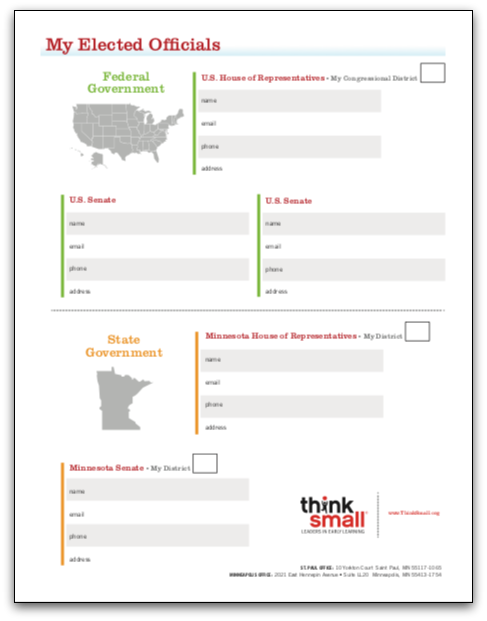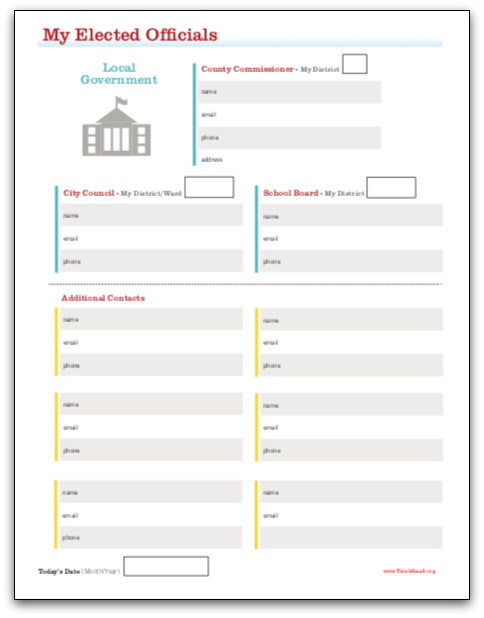
What are your numbers?
6, 43A, 2, 7?
5, 12B, 4, 1?
By Marie Huey, Public Policy and Advocacy Coordinator
Several elected officials represent you at different levels, and their districts often have numbers. Learn your numbers for easier navigation when you’re advocating for early learning.

The Secretary of State’s Polling Place Finder includes a guide to districts for your location. Enter your address, then reference the green box for an overview of your numbers. Take it a step further by using this form created by Think Small to write down your numbers and contact information for current office holders.
Congressional District
Minnesota has eight members of the House of Representatives. Each congressperson represents about 710,000 Minnesotans. You can see what the districts look like on this map. Find out your current representative and congressional district number (1-8) using this tool.
State Senate
There are 67 state senators in Minnesota, each of whom represents about 79,000 people. View a map of the districts. Find out your senator and district number (1-67) here.
State House of Representatives
Each state senate district is split into two House of Representative seats, A and B. Thus, there are twice as many state representatives as senators. Each of the 124 legislators represents about 39,500 people. View the map. Find your representative and number (1A-67B).
County Commissioners
Minnesota is made up of 87 counties. Each county board has five commissioners, unless the county has 100,000 residents or more, in which case they can increase to seven members. View a map of all county commissioner districts. Use this tool to view all commissioners in your county, then visit your county website or call the office to find out who represents your specific location (1-7).
City Council

City council structure and authority varies depending on the city. While the mayor represents the entire city, council members sometimes represent specific areas, or wards. (At-large means the member represents your entire area, rather than a smaller subset or district). Use this tool to find out who represents you at the city level and what number ward you live in, if applicable. Some positions have not yet been updated. Continue to your city website listed in the tool to verify.
School Board
Your school board district may also have a number. Visit the website or call your local district to find out more.
Bonus: Precinct
Precincts are the basic geographical areas for organizing and administering elections. There are over 4,000 precincts throughout the state. Use the Secretary of State’s Polling Place Finder to learn your precinct number.
Other
Other city- or county-specific entities may exist in your area. Visit your city and county websites to find out more. Read the local paper for updates on decisions that affect your community. Follow all of your elected officials on social media to stay informed.
Now What?
Keep the form handy and reference it when it’s time to advocate or vote. Then, maybe arrange your lucky numbers and buy a lottery ticket?







